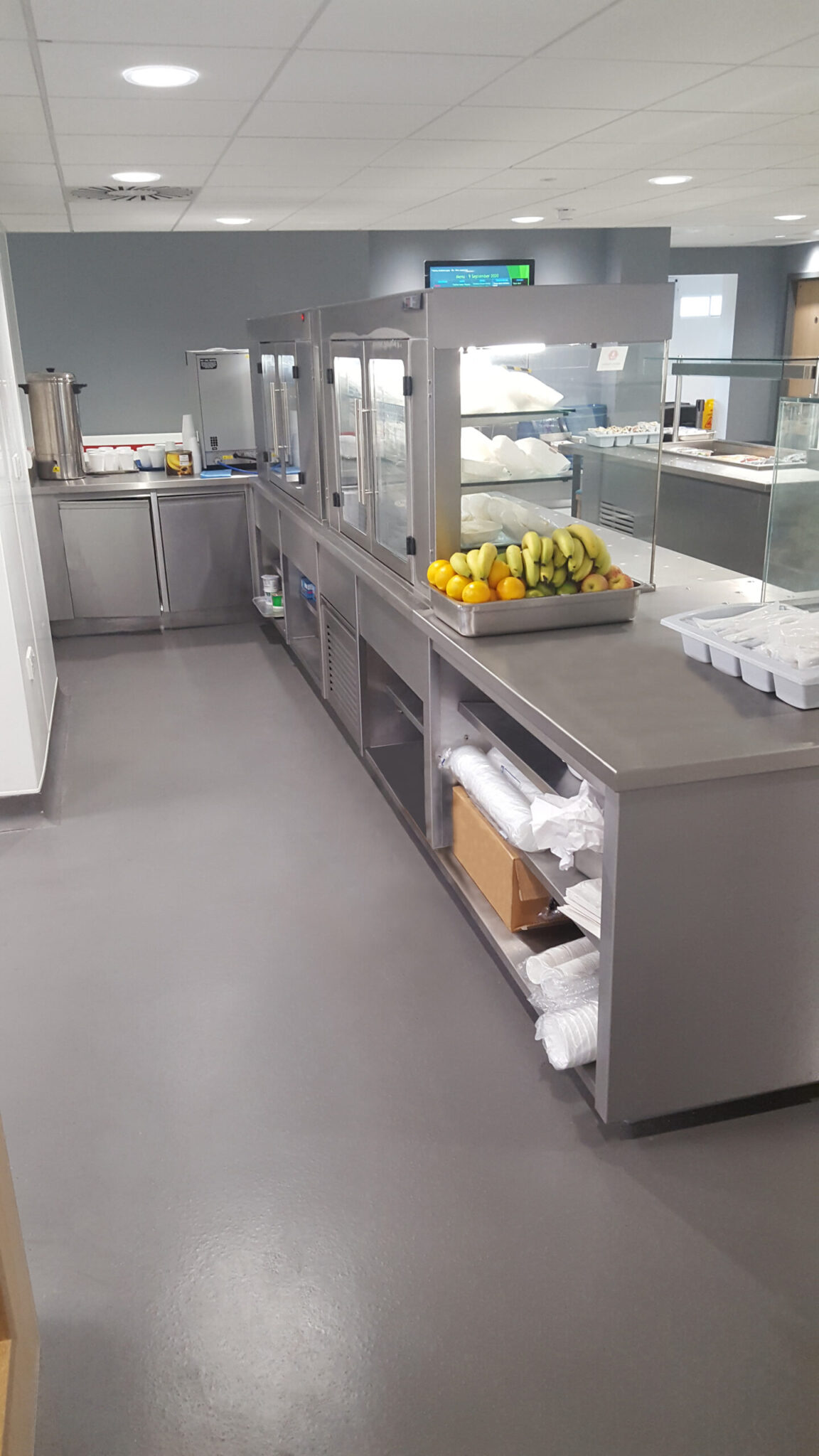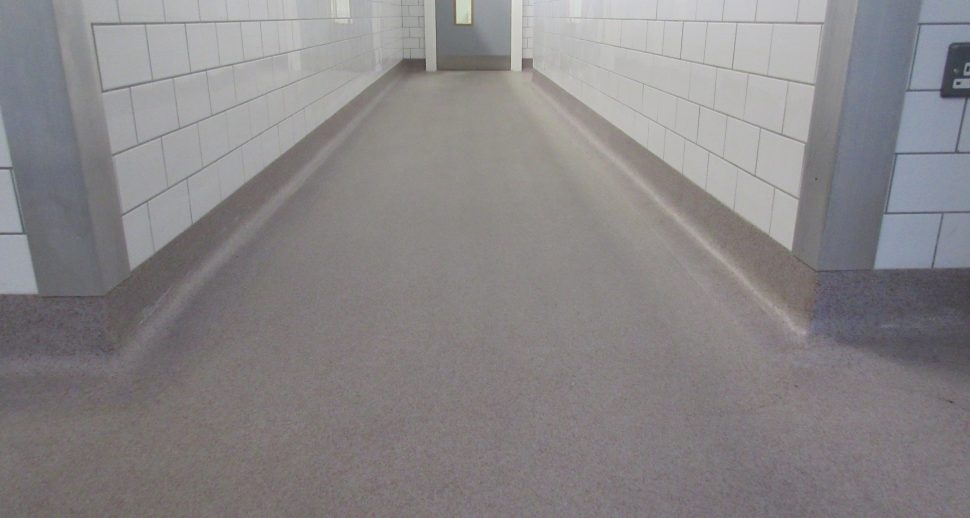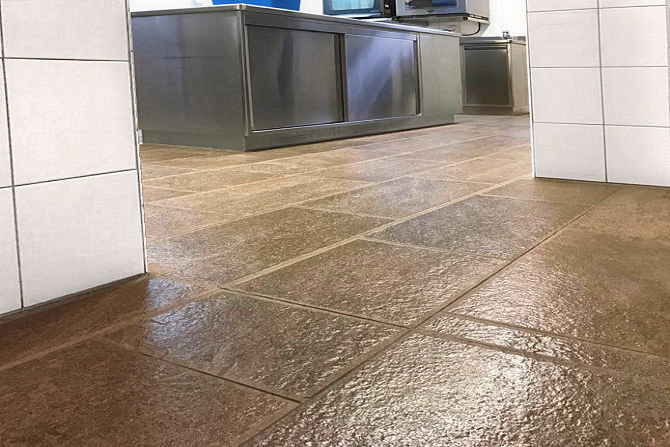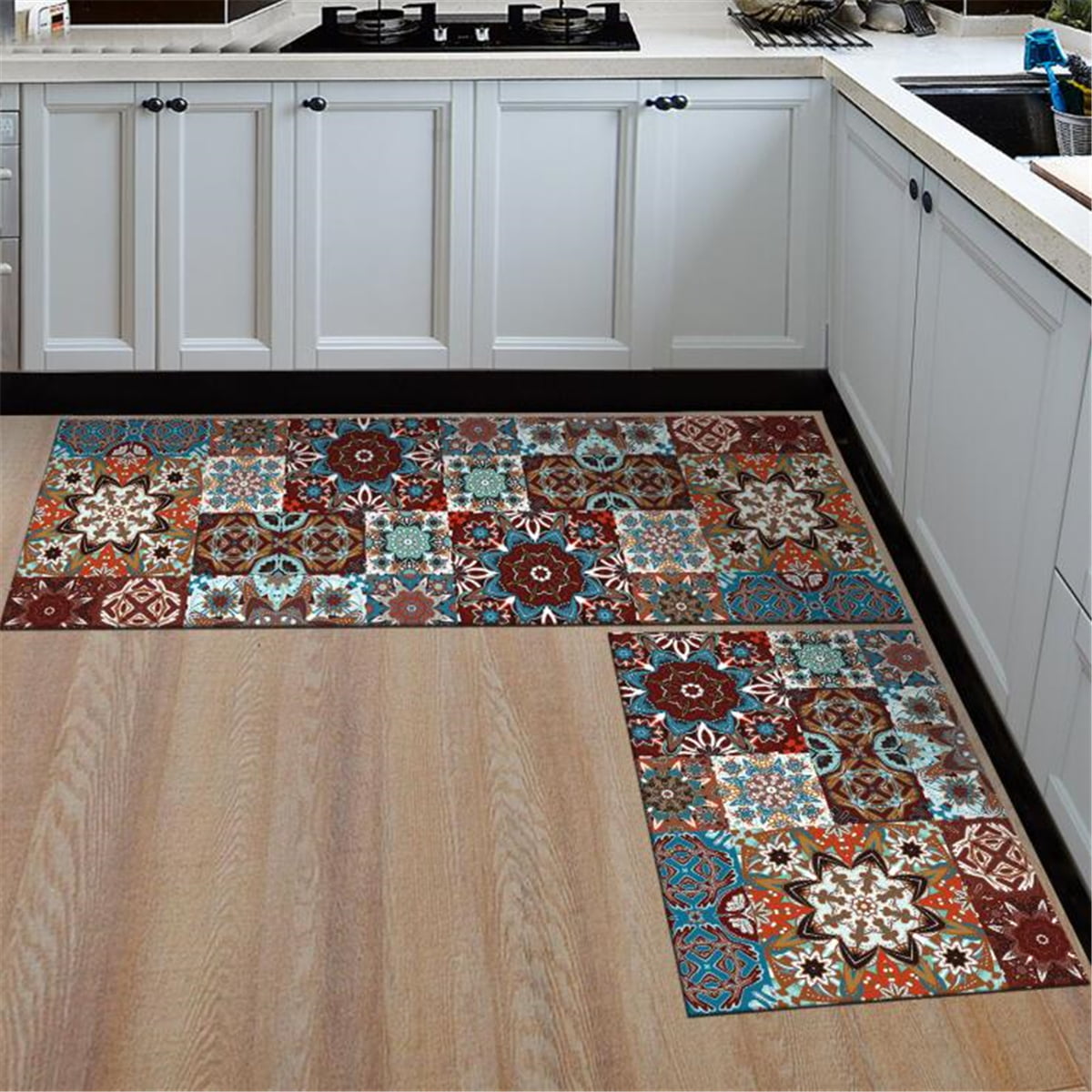Introduction to Non-Slip Kitchen Flooring
The kitchen is often the heart of the home, where meals are prepared, and families gather. However, it can also be one of the most hazardous areas due to the combination of water, oils, and other substances that can make floors slippery. Non-slip kitchen flooring is essential for ensuring safety and preventing accidents. This article will delve into the various aspects of non-slip kitchen flooring, including types, benefits, installation, maintenance, and design considerations.
Types of Non-Slip Kitchen Flooring
- Vinyl Flooring: Vinyl flooring is a popular choice for kitchens due to its durability, affordability, and water resistance. It comes in various styles, including sheets, tiles, and planks, making it versatile for different kitchen designs. Vinyl flooring often features a textured surface that enhances its non-slip properties, reducing the risk of slips and falls.
- Rubber Flooring: Rubber flooring is known for its excellent slip-resistant properties, making it a top choice for commercial kitchens and high-traffic areas. It provides a cushioned surface that is comfortable to stand on for extended periods. Rubber flooring is also water-resistant and easy to clean, which adds to its practicality in kitchen settings.
- Cork Flooring: Cork flooring offers a natural, eco-friendly option for non-slip kitchen floors. It has inherent anti-slip properties due to its slightly textured surface and compressibility, which provides a good grip. Cork is also comfortable underfoot and has sound-absorbing qualities, making it a pleasant choice for busy kitchens.
- Ceramic and Porcelain Tiles: Ceramic and porcelain tiles can be made non-slip by choosing tiles with a matte finish or a textured surface. These tiles are durable and easy to clean, and they come in a wide range of designs and colors. However, it is crucial to select tiles specifically rated for slip resistance to ensure safety.
- Stone Flooring: Natural stone flooring, such as slate or granite, can also be a good non-slip option when properly treated. Textured or rough finishes provide a better grip than polished stone. Stone flooring is incredibly durable and adds a luxurious feel to the kitchen, but it requires regular maintenance to retain its non-slip properties.
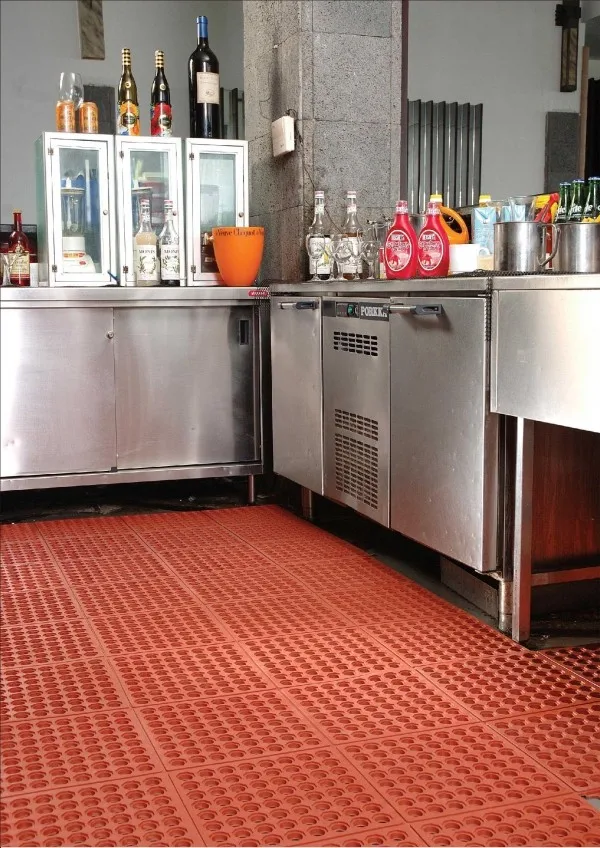
Benefits of Non-Slip Kitchen Flooring
Enhanced Safety
The primary benefit of non-slip kitchen flooring is the significant reduction in the risk of slips and falls. Kitchens are prone to spills and splashes, and having a non-slip surface can prevent accidents that could lead to serious injuries.
Increased Comfort
Many non-slip flooring options, such as rubber and cork, offer a cushioned surface that reduces fatigue for those who spend a lot of time standing in the kitchen. This added comfort can be beneficial for home cooks and professional chefs alike.
Durability and Longevity
Non-slip kitchen flooring materials are often designed to withstand heavy use and resist damage from moisture, spills, and high foot traffic. This durability ensures that the flooring will last for many years, providing a long-term safety solution.
Easy Maintenance
Many non-slip flooring options are easy to clean and maintain, which is essential in a kitchen environment. Materials like vinyl, rubber, and ceramic tiles can be quickly wiped down or mopped, making them practical choices for busy households.
Versatile Design Options
Non-slip flooring materials come in a wide range of styles, colors, and patterns, allowing homeowners to choose a design that complements their kitchen décor. This versatility means that safety does not have to come at the expense of aesthetics.
Eco-Friendly Choices
Several non-slip flooring options, such as cork and certain types of rubber, are environmentally friendly. These materials are often made from renewable resources and have a lower environmental impact, making them a sustainable choice for eco-conscious homeowners.
Installation of Non-Slip Kitchen Flooring
1. Preparing the Subfloor
Proper installation of non-slip kitchen flooring begins with preparing the subfloor. The subfloor must be clean, dry, and level to ensure the new flooring adheres correctly. Any existing flooring materials that are damaged or uneven should be removed or repaired.
2. Measuring and Cutting
Accurate measurements are crucial for a successful installation. Measure the kitchen area carefully and cut the flooring material to fit. For vinyl sheets or tiles, use a utility knife, while for rubber or cork, a sharp blade or specialized cutting tool may be required.
3. Adhesive Application
Depending on the type of non-slip flooring, an adhesive may be needed. Follow the manufacturer’s instructions for applying adhesive to ensure a secure bond. Some flooring options, like click-lock vinyl planks, do not require adhesive and can be installed as a floating floor.
4. Laying the Flooring
Begin laying the flooring from the center of the kitchen, working outwards to ensure a symmetrical installation. Press the flooring firmly into place to eliminate any air bubbles and ensure a tight fit. Use a roller to smooth out the surface and secure the adhesive bond.
5. Sealing and Finishing
Certain non-slip flooring materials, such as stone or some types of tile, may require sealing to enhance their slip-resistant properties and protect against stains. Apply a suitable sealer according to the manufacturer’s instructions and allow it to dry completely.
6. Post-Installation Care
After installation, avoid walking on the new flooring for the recommended time to allow the adhesive to set. Follow the manufacturer’s guidelines for initial cleaning and maintenance to ensure the longevity and performance of the non-slip surface.
Maintenance of Non-Slip Kitchen Flooring
Regular Cleaning
Maintaining a clean floor is essential for preserving its non-slip properties. Regular sweeping or vacuuming removes dirt and debris that can reduce traction. For more thorough cleaning, use a damp mop with a mild detergent suitable for the flooring material.
Immediate Spill Cleanup
Promptly cleaning up spills is crucial in a kitchen to prevent slip hazards and stains. Use a clean, absorbent cloth or paper towel to blot up spills, and then clean the area with a suitable cleaner. Avoid using harsh chemicals that could damage the flooring.
Periodic Deep Cleaning
In addition to regular cleaning, periodic deep cleaning is necessary to remove ingrained dirt and grime. Follow the manufacturer’s recommendations for deep cleaning, which may include specific cleaning agents or methods. This helps maintain the floor’s appearance and slip resistance.
Preventative Measures
Place mats or rugs at kitchen entrances to reduce the amount of dirt and moisture tracked onto the floor. Use non-slip mats in high-risk areas, such as in front of the sink or stove. These mats should have a rubber backing to prevent them from sliding.
Protecting the Surface
Use furniture pads under the legs of kitchen chairs and tables to prevent scratches and damage to the floor. Avoid dragging heavy appliances or furniture across the floor, as this can cause gouges or scuffs. If moving heavy items, use a dolly or lift them to protect the floor.
Regular Inspections
Periodically inspect the flooring for signs of wear or damage. Look for cracks, chips, or areas where the slip-resistant surface has worn down. Address any issues promptly to prevent further damage and maintain the floor’s safety features.
Design Considerations for Non-Slip Kitchen Flooring
Aesthetic Appeal
Non-slip flooring options come in a variety of styles, colors, and patterns, allowing homeowners to choose a look that complements their kitchen décor. From modern to traditional designs, there are options to suit every taste. Consider the overall theme and color scheme of the kitchen when selecting flooring.
Texture and Finish
The texture and finish of the flooring play a significant role in its slip resistance. Matte or textured finishes provide better grip than glossy surfaces. When choosing tiles or stone, look for those with a rough or textured finish to enhance safety.
Lighting and Color
The color and lighting in the kitchen can impact the appearance of the flooring. Lighter colors can make a small kitchen appear larger and more open, while darker tones can add warmth and coziness. Ensure the lighting highlights the floor’s texture and does not create glare, which can reduce visibility.
Compatibility with Underfloor Heating
If underfloor heating is a consideration, ensure that the chosen non-slip flooring is compatible with this feature. Some materials, like certain vinyl or stone options, work well with underfloor heating, providing comfort and energy efficiency.
Seamless Integration
For a cohesive look, the non-slip kitchen flooring should integrate seamlessly with flooring in adjacent rooms. This creates a smooth transition and enhances the overall flow of the home’s design. Consider using the same or similar flooring materials in open-plan spaces.
Customization Options
Many non-slip flooring materials offer customization options, such as custom colors, patterns, or finishes. This allows homeowners to create a unique look that reflects their style while ensuring safety. Consult with manufacturers or suppliers to explore available customization options.
Common Mistakes to Avoid
Choosing the Wrong Material
One common mistake is selecting a flooring material that is not suitable for kitchen environments. Not all flooring options advertised as non-slip are appropriate for areas with high moisture and heavy use. Ensure the chosen material is designed specifically for kitchens.
Ignoring Maintenance Requirements
Neglecting the maintenance requirements of non-slip flooring can lead to diminished slip resistance and a shorter lifespan. Regular cleaning and proper care are essential to preserve the flooring’s safety features and appearance. Follow the manufacturer’s guidelines for maintenance.
Improper Installation
Improper installation can compromise the effectiveness of non-slip flooring. Hiring a professional installer with experience in non-slip materials ensures the flooring is laid correctly and securely. DIY installations can be risky if not done properly.
Overlooking Aesthetic Factors
While safety is paramount, overlooking the aesthetic aspects of flooring can result in a kitchen that looks unappealing or mismatched with the rest of the home. Balance safety with design by choosing non-slip flooring that also meets your aesthetic preferences.
Not Considering Long-Term Durability
Selecting flooring based solely on appearance or initial cost without considering long-term durability can be a costly mistake. Invest in high-quality, durable non-slip flooring that will withstand the demands of a busy kitchen and provide long-term safety.
Failing to Address Existing Subfloor Issues
Installing non-slip flooring over a damaged or uneven subfloor can lead to problems such as gaps, lifting, or increased wear. Ensure the subfloor is properly prepared and repaired before installing new flooring to prevent these issues.
What are the best materials for non-slip kitchen flooring?
The best materials for non-slip kitchen flooring include vinyl, rubber, cork, ceramic, and porcelain tiles, as well as certain types of natural stone like slate or granite. These materials offer a combination of slip resistance, durability, and ease of maintenance.
How do I maintain non-slip kitchen flooring?
Maintaining non-slip kitchen flooring involves regular cleaning, prompt spill cleanup, periodic deep cleaning, and preventative measures such as using mats and furniture pads. Follow the manufacturer’s recommendations for specific cleaning agents and methods to preserve the flooring’s slip-resistant properties.
Can non-slip kitchen flooring be stylish and safe?
Yes, non-slip kitchen flooring can be both stylish and safe. Many non-slip flooring options come in a variety of designs, colors, and textures, allowing homeowners to choose a look that complements their kitchen décor while ensuring safety. Customization options are also available for a unique, personalized touch.
Is non-slip flooring necessary for all kitchens?
While not mandatory, non-slip flooring is highly recommended for all kitchens, especially those with high traffic, children, or elderly residents. The combination of water, oils, and other substances in kitchens creates a high risk of slips and falls, making non-slip flooring a valuable safety feature.
How long does non-slip kitchen flooring last?
The lifespan of non-slip kitchen flooring depends on the material, quality, and maintenance. High-quality vinyl, rubber, and stone flooring can last 20 years or more with proper care. Regular cleaning and addressing any damage promptly can extend the lifespan of the flooring.
Can I install non-slip kitchen flooring myself?
While some non-slip flooring options, like click-lock vinyl planks, are designed for DIY installation, others may require professional installation to ensure proper adhesion and performance. It’s important to follow the manufacturer’s instructions and consider hiring a professional for more complex installations to avoid mistakes and ensure safety.
Non Slip Flooring For Kitchens Hamilton Flooring
Large Size Of Artificial Brick Tile Flooring Home Depot Vinyl For Kitchen Non Slip Tilered
Gastronomy kitchen: Anti-Slip Flooring
Extraordinary rubber floor tiles for bathrooms restaurant kitchen from Non Slip Ceramic Floor
2PCS Non-Slip Kitchen Floor Carpet Runner Rug for High-Traffic Flooring Areas Including Bathroom
Related Posts:


